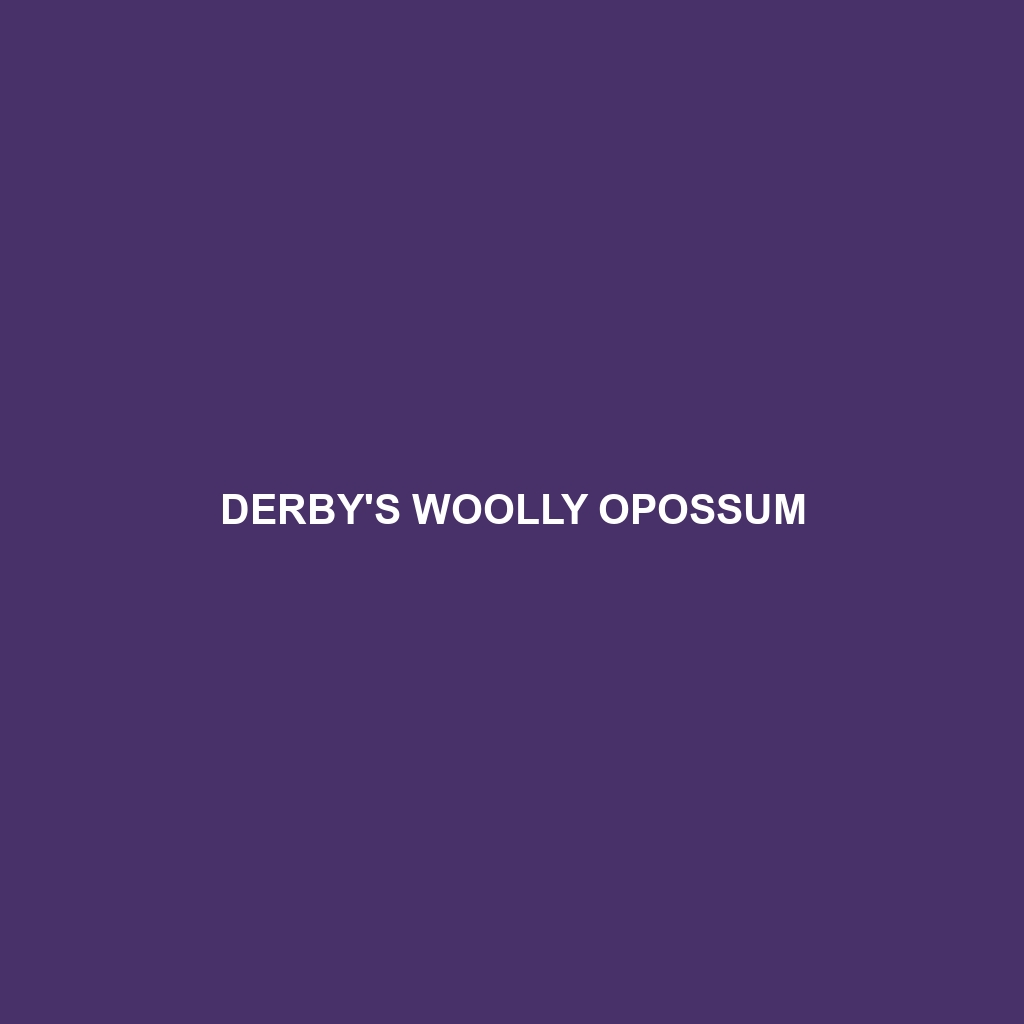Derby’s Woolly Opossum: A Comprehensive Overview
Derby’s Woolly Opossum (Caluromys derbianus) is a fascinating, nocturnal marsupial native to the tropical and subtropical forests of Central and South America. Known for its dense and woolly fur, this species exhibits incredible adaptability and plays a vital role in its ecosystem through seed dispersal and insect control. Despite their elusive nature, these opossums are a remarkable species with a host of unique features and behaviors that make them an intriguing subject of study and conservation.
Physical Characteristics:
Size: Derby’s Woolly Opossum is a medium-sized marsupial, with adults typically measuring 30 to 50 centimeters in total length, including a prehensile tail that can be as long as their body.
Weight: They usually weigh between 200 to 400 grams, though this can vary depending on age and sex.
Coloration: Their fur is dense and woolly, typically grayish-brown on the back with a lighter, almost creamy underbelly. The face often features distinctive markings, including a dark stripe running from the nose to the top of the head.
Special Features: One of their most notable features is their prehensile tail, which is adept at grasping branches and aiding in their arboreal lifestyle. Additionally, they have large, forward-facing eyes that provide excellent night vision, and their opposable thumbs allow for better grip when climbing.
Behaviors:
Social Interactions: Derby’s Woolly Opossum is generally solitary, with individuals coming together primarily for mating. They communicate through a series of vocalizations, including clicks and hisses, and use scent marking to establish territory.
Feeding Habits: These opossums are omnivorous, with a diet that includes fruits, nectar, insects, and small vertebrates. They play a crucial role in pollination and seed dispersal, particularly for various fruiting plants in their habitat.
Ecological Roles: By consuming a variety of fruits and dispersing seeds through their feces, Derby’s Woolly Opossum contributes to forest regeneration. They also help control insect populations, thus maintaining ecological balance.
Habitats:
Geographic Range: Derby’s Woolly Opossum is found from southern Mexico through Central America (including Belize, Costa Rica, and Panama) and into northern South America, particularly in Colombia and Venezuela.
Preferred Environment: They thrive in tropical and subtropical rainforests, often preferring areas with dense undergrowth and abundant tree cover. They are highly arboreal, spending most of their time in trees.
Adaptations:
Arboreal Adaptations: Their prehensile tail and opposable thumbs are key adaptations for an arboreal lifestyle, allowing them to navigate through the forest canopy with ease.
Nocturnal Lifestyle: Their large eyes are adapted for night vision, helping them forage and avoid predators after dark.
Dietary Flexibility: Being omnivorous, they can exploit a wide range of food sources, making them adaptable to varying environmental conditions.
Conservation Status:
Current Status: The International Union for Conservation of Nature (IUCN) lists Derby’s Woolly Opossum as “Least Concern” due to its wide distribution. However, habitat loss due to deforestation and land-use changes poses ongoing threats.
Conservation Efforts: Efforts to preserve their habitat through protected areas and sustainable forestry practices are crucial for their continued survival. Public education and awareness campaigns also play a role in their conservation.
Fun Facts:
Unique Reproduction: Like all marsupials, female Derby’s Woolly Opossums have a pouch where their young continue to develop after birth, offering a fascinating glimpse into the diversity of mammalian reproductive strategies.
Pollinators: Their attraction to nectar makes them occasional pollinators for certain plant species, adding another layer to their ecological importance.
Flexible Tail: Their tail is not only prehensile but also highly flexible and strong, capable of supporting their entire body weight when hanging from branches.
Derby’s Woolly Opossum embodies the intricate balance and beauty of the tropical forests they inhabit. Understanding and protecting this species is essential for maintaining the health and diversity of their ecosystems.
